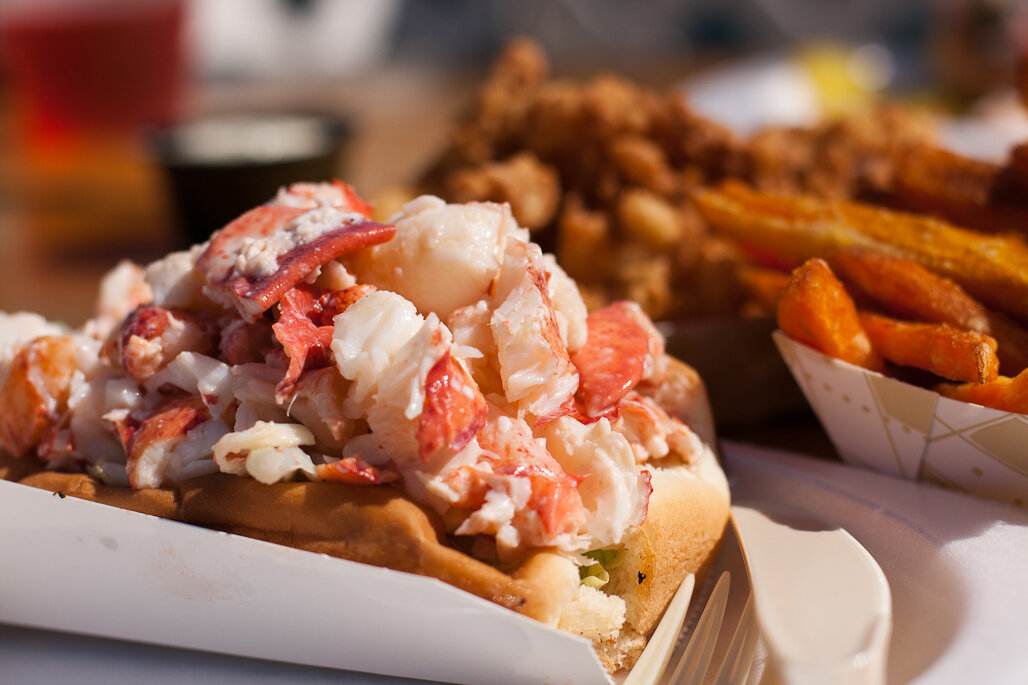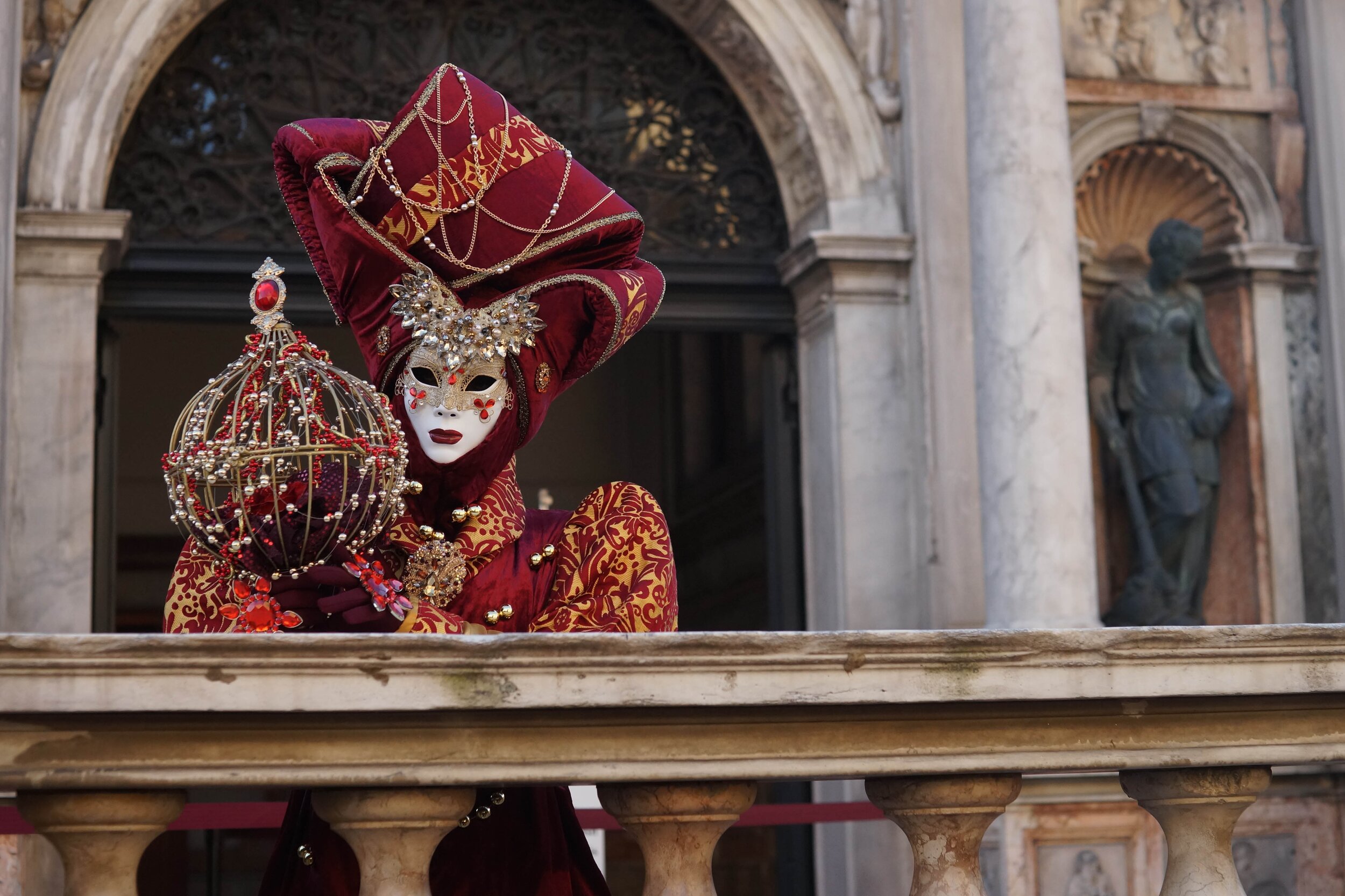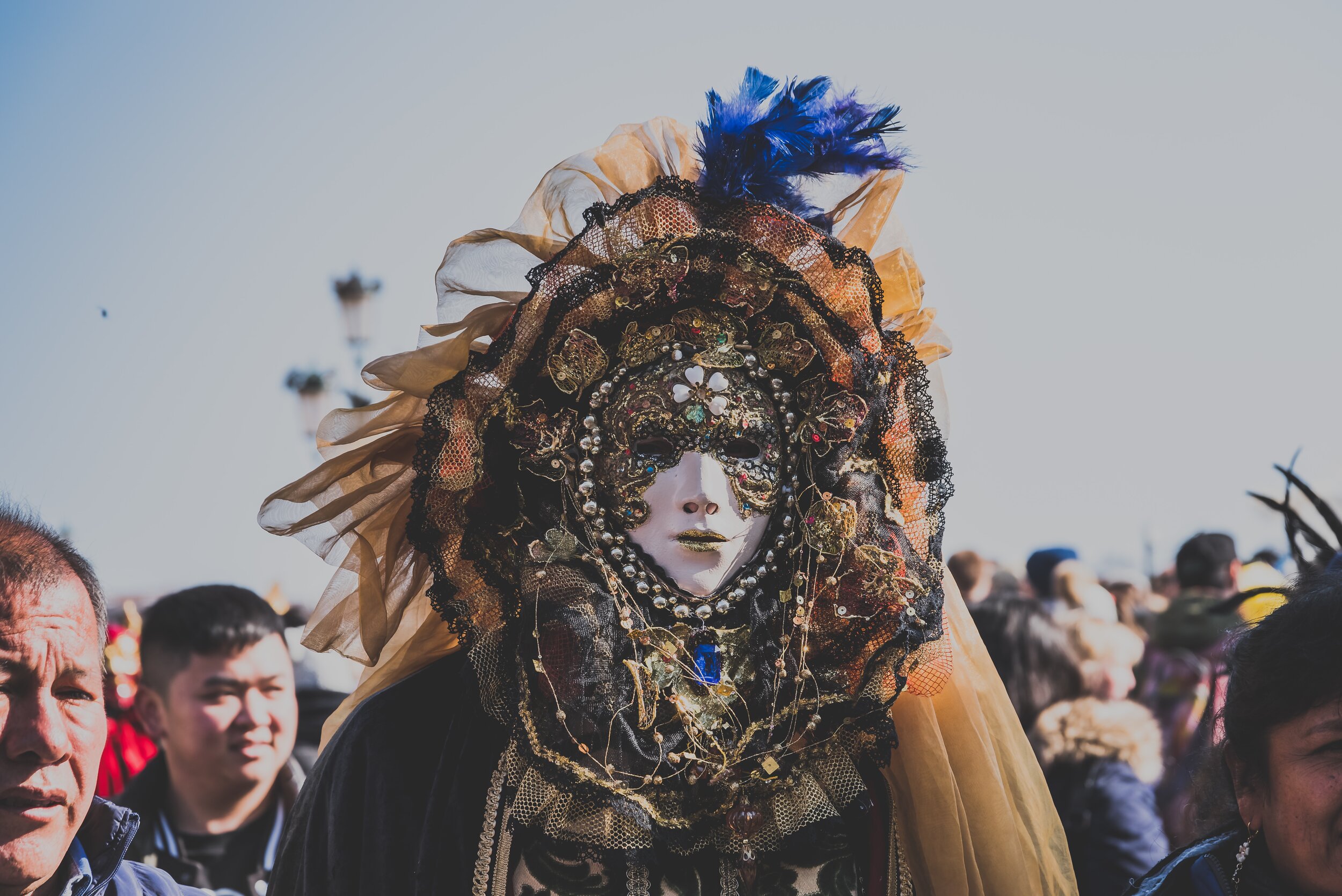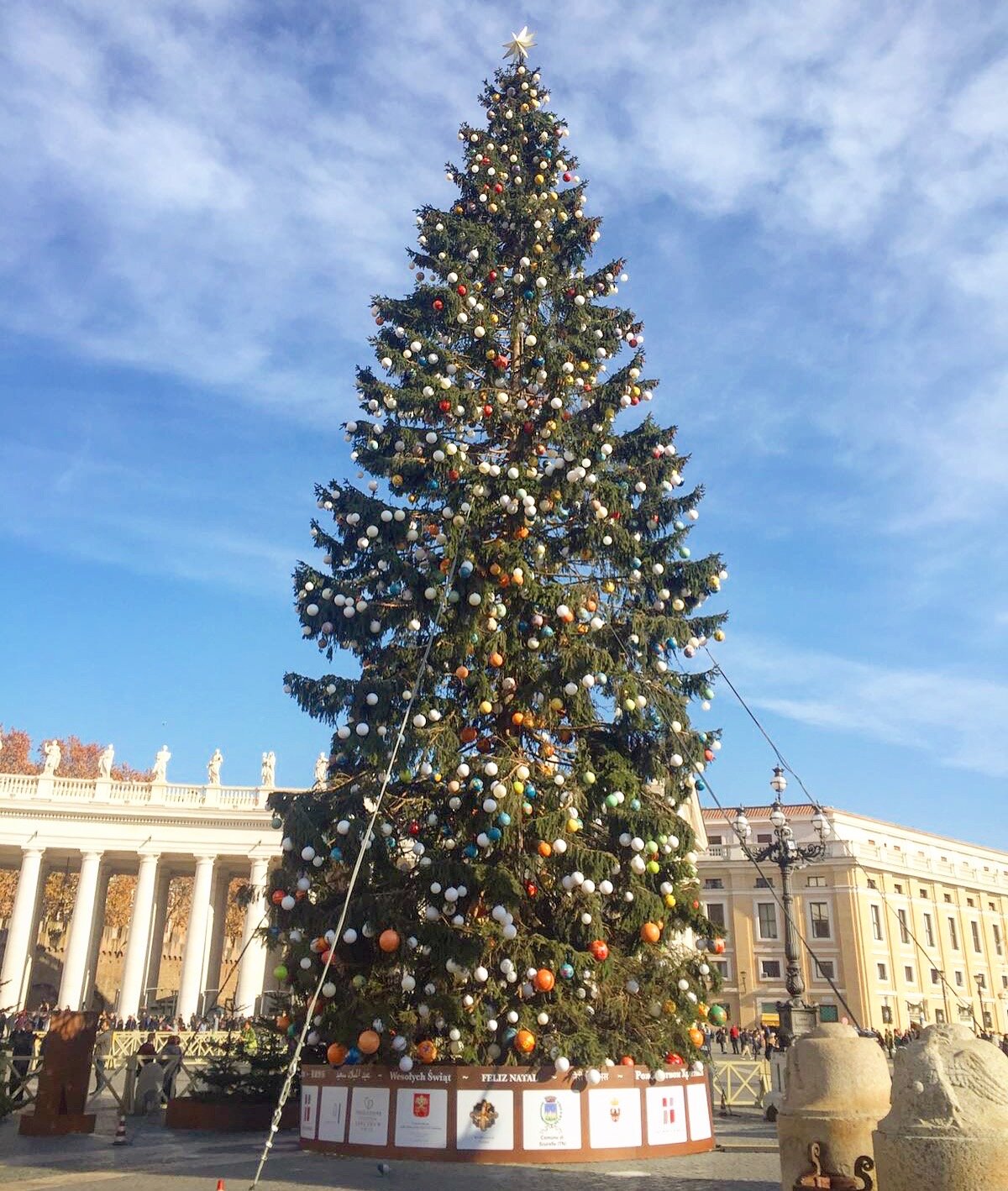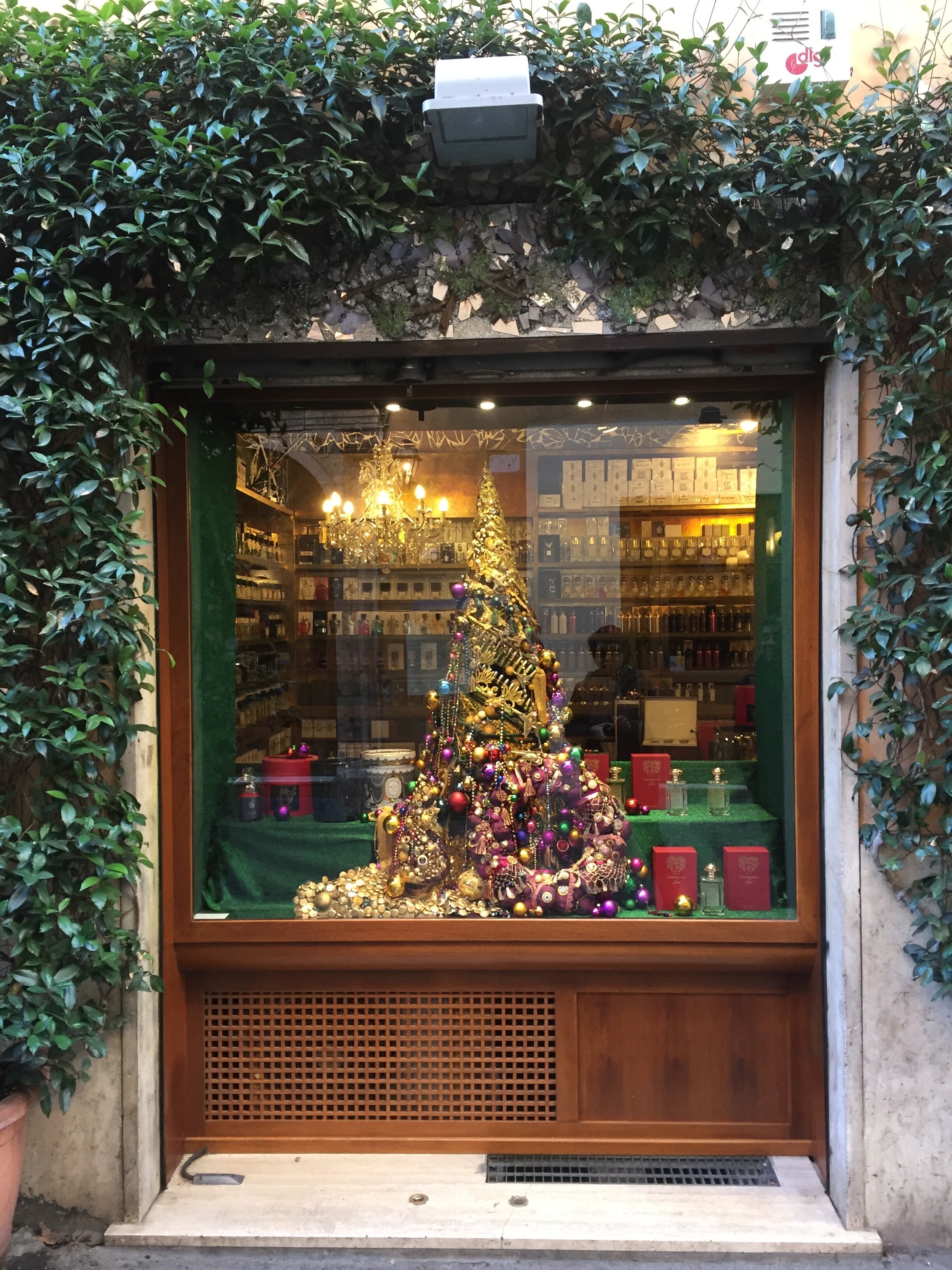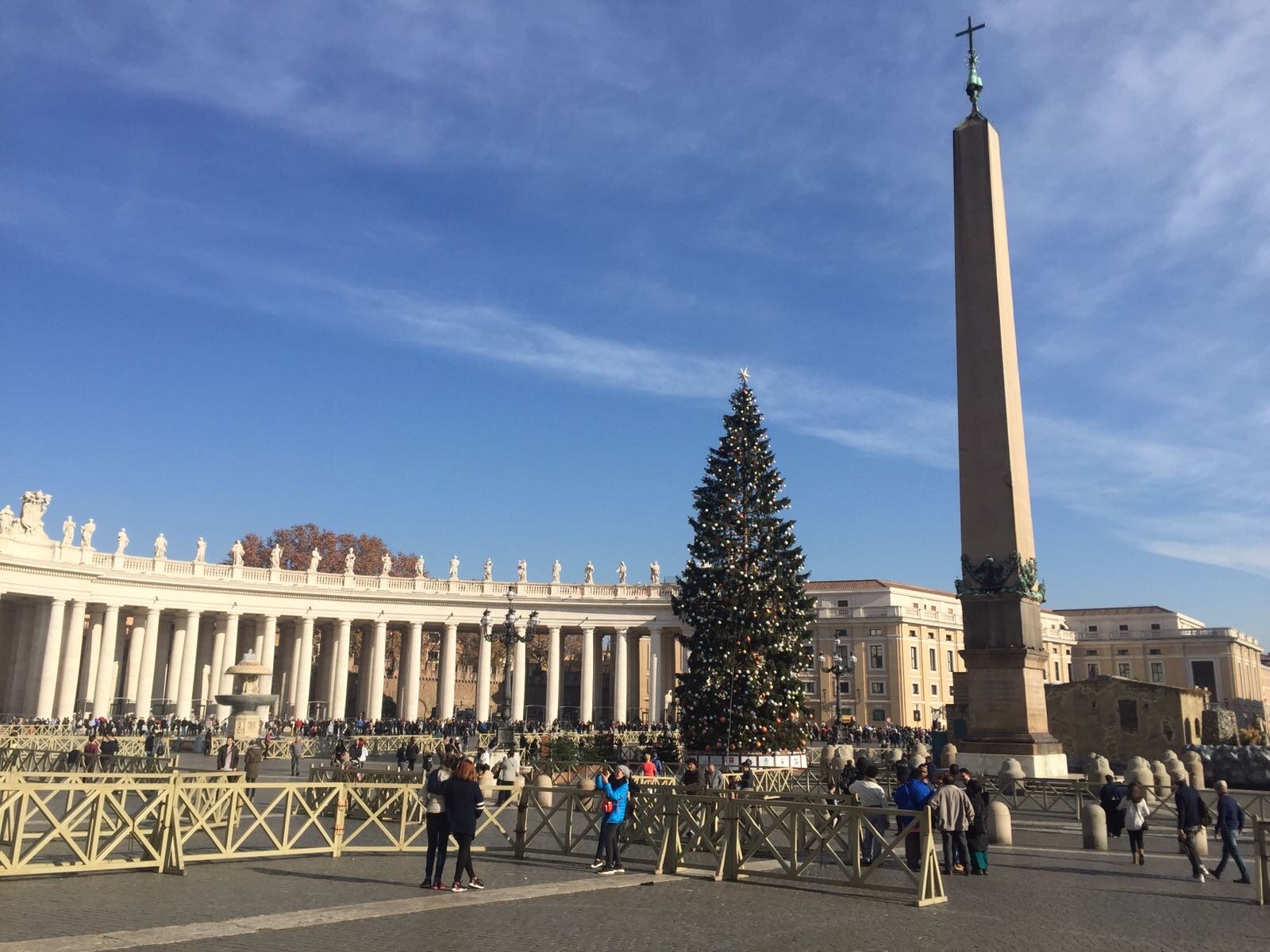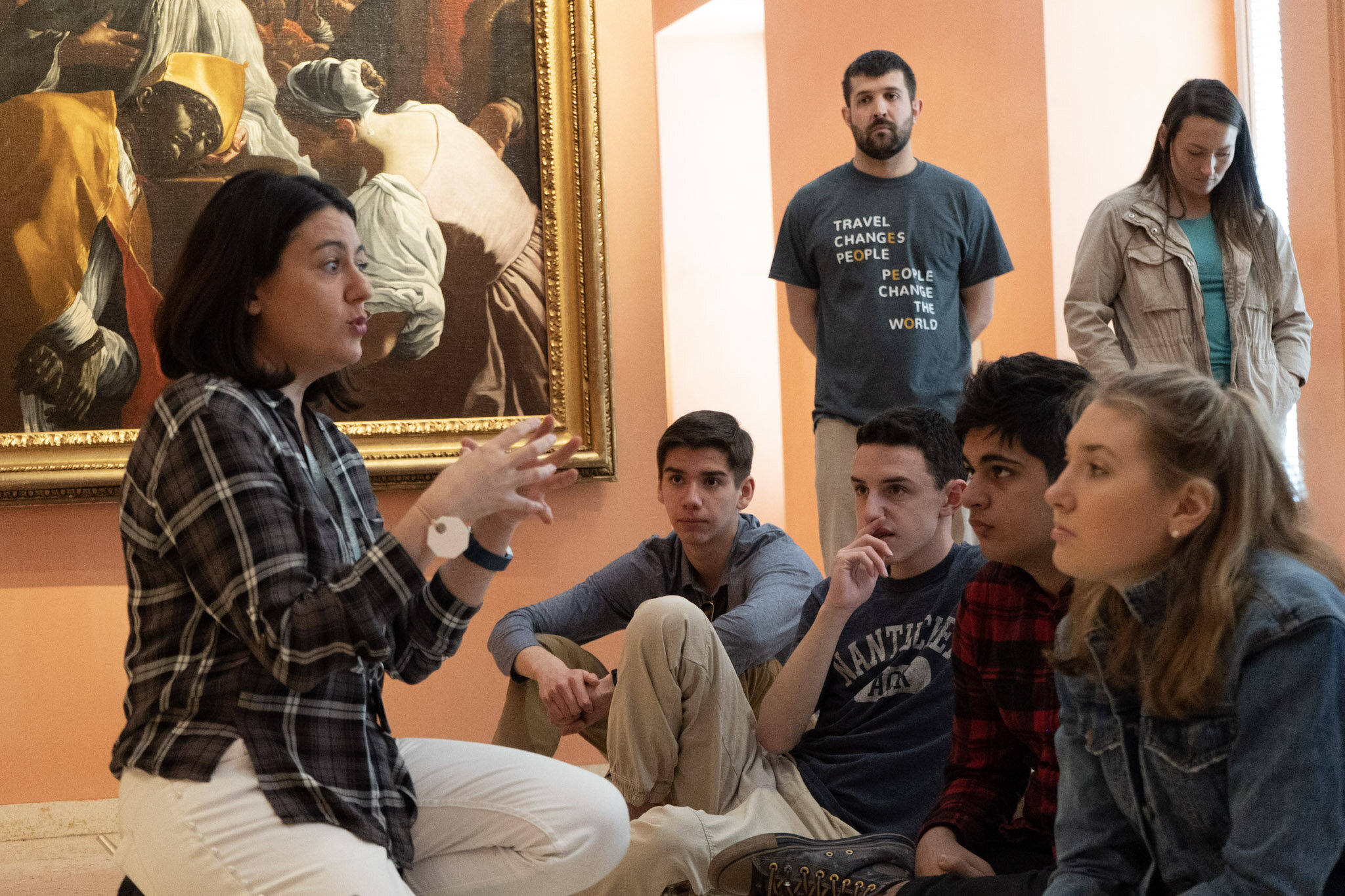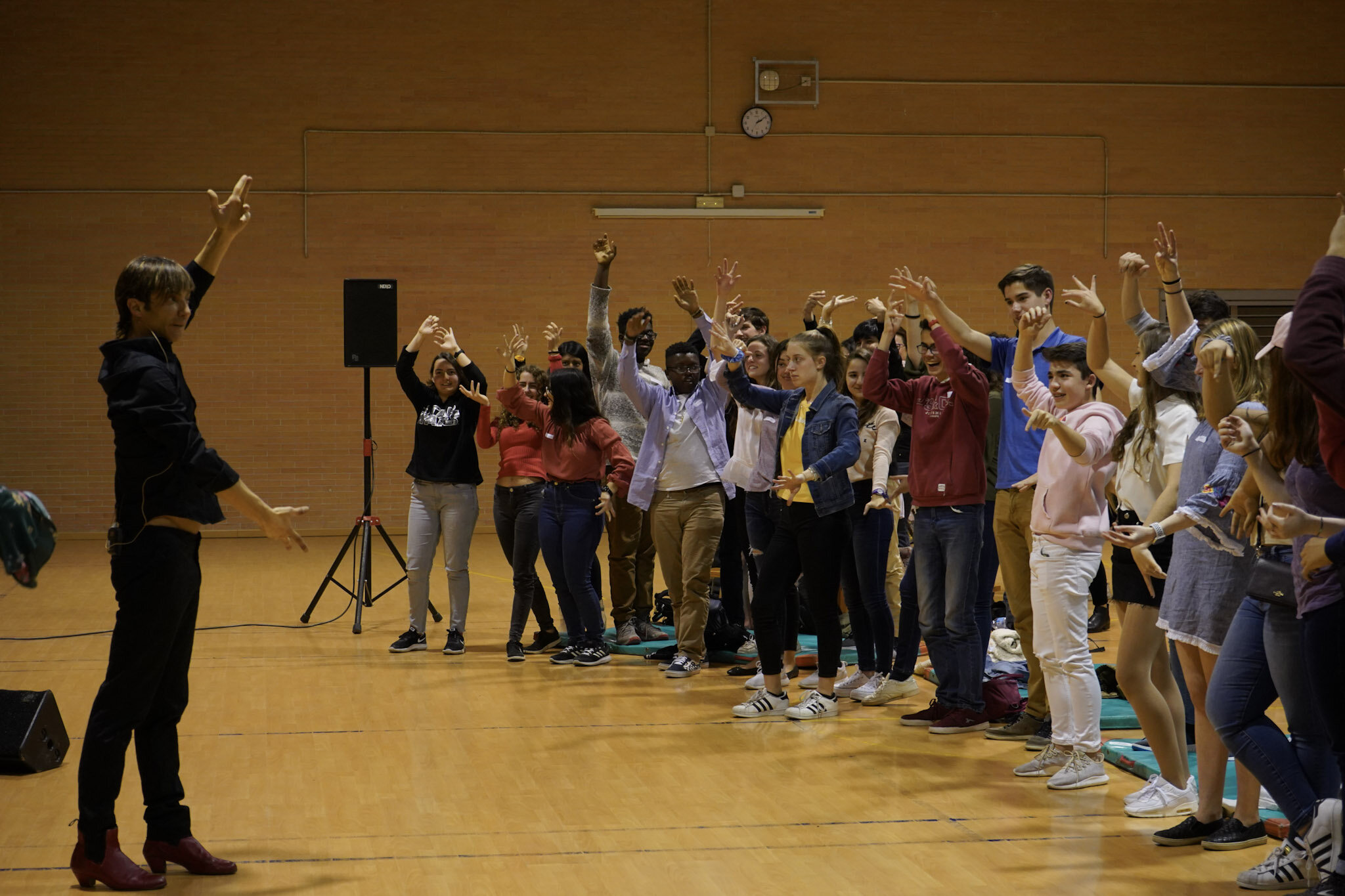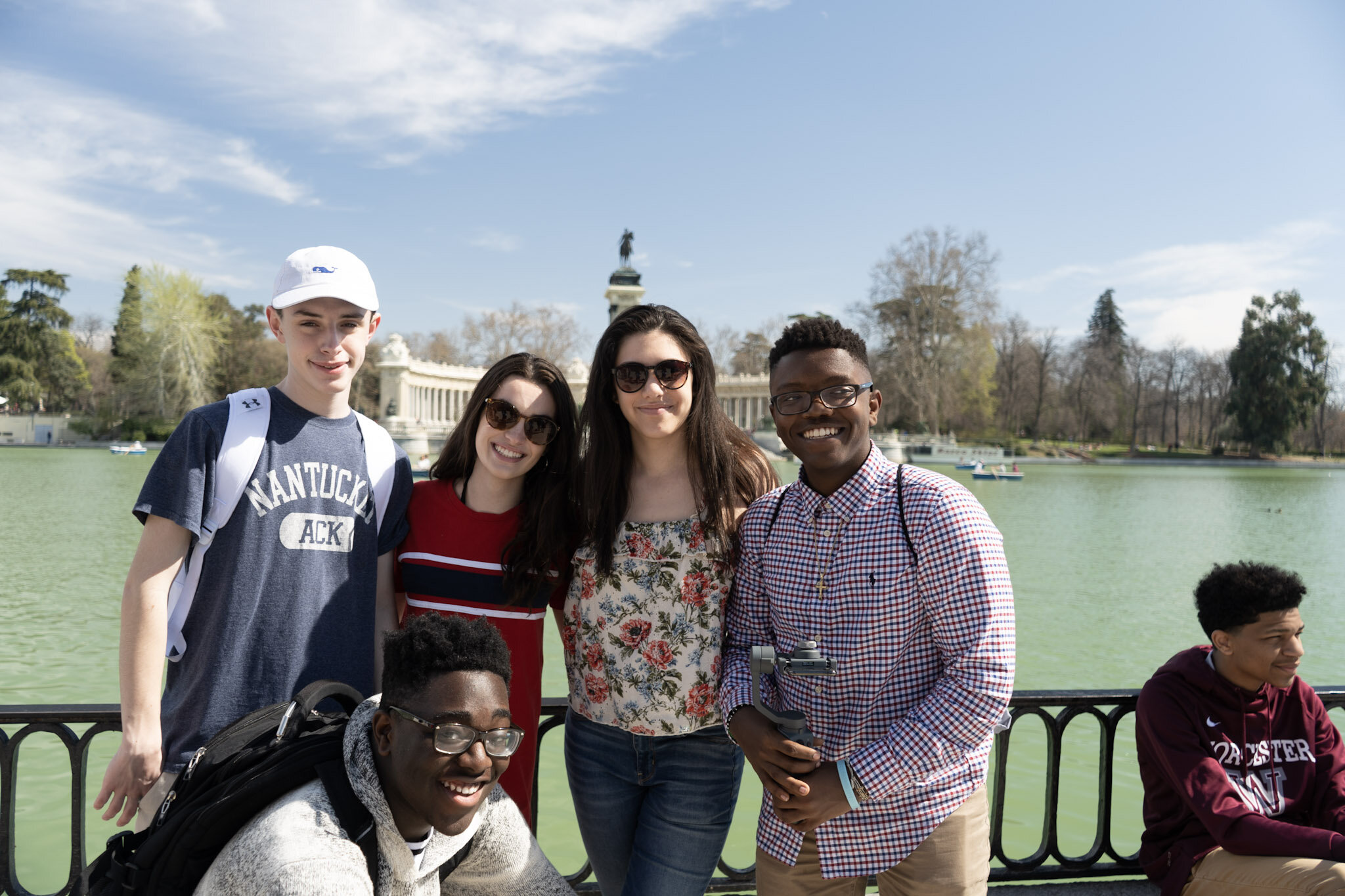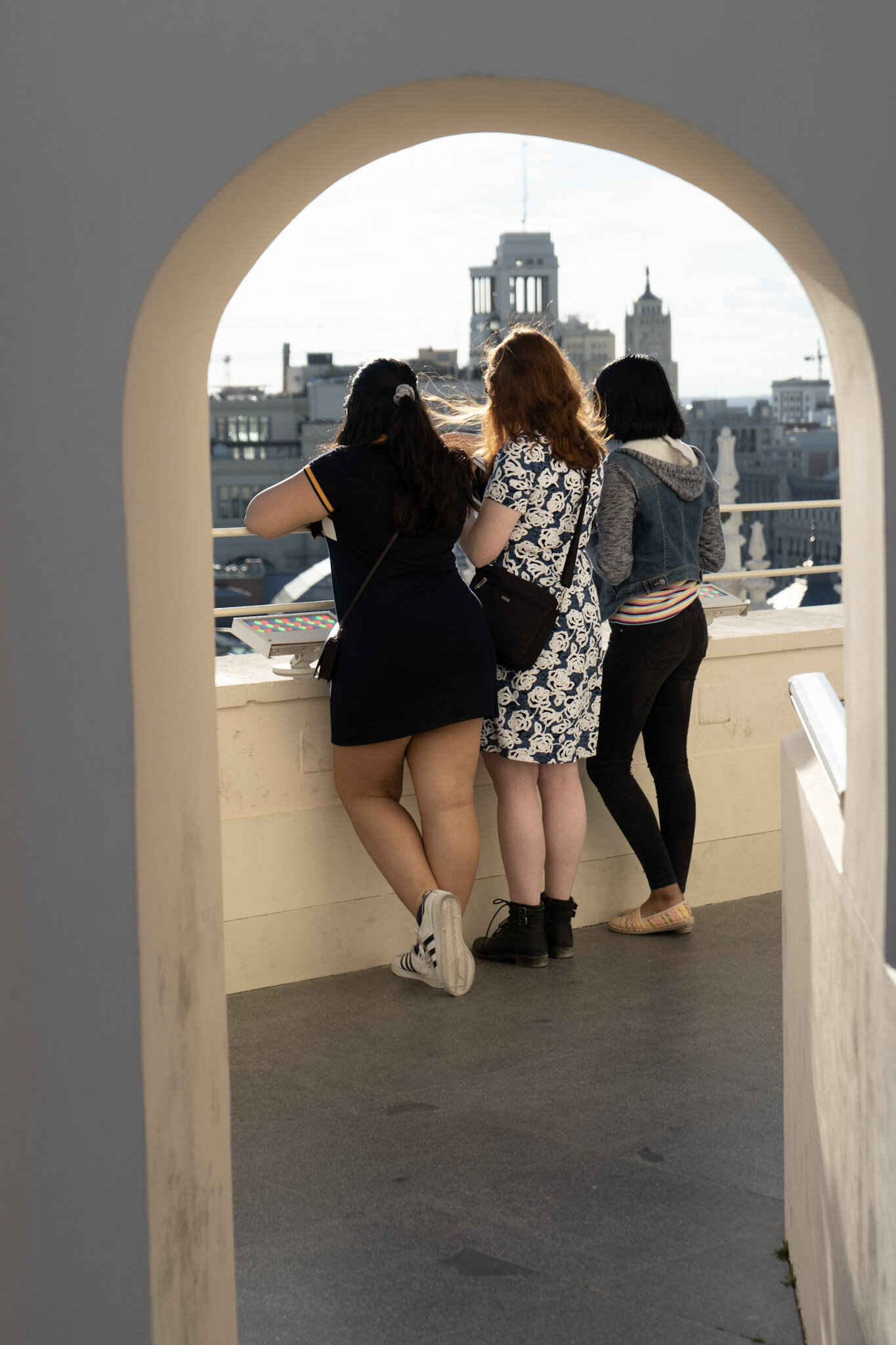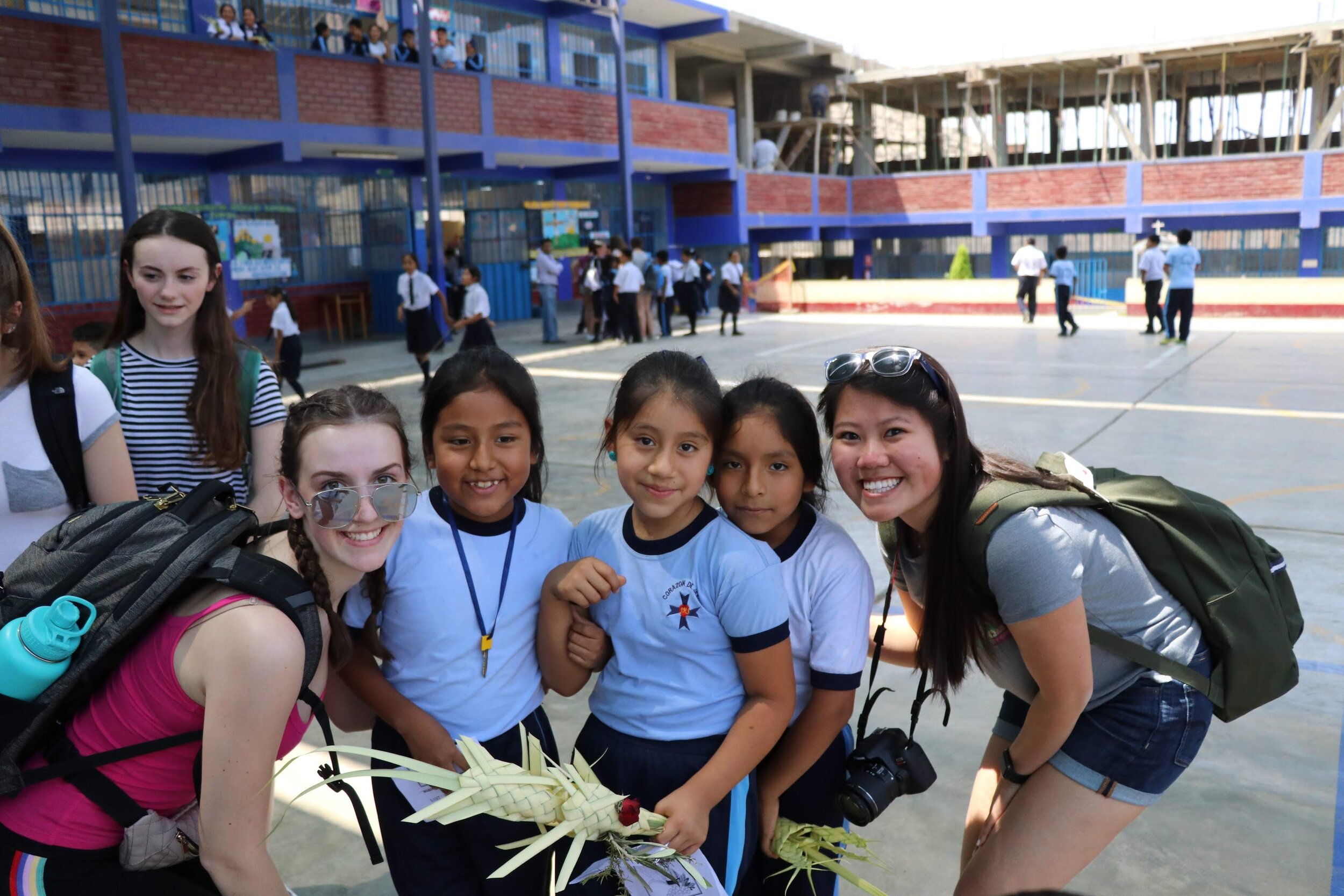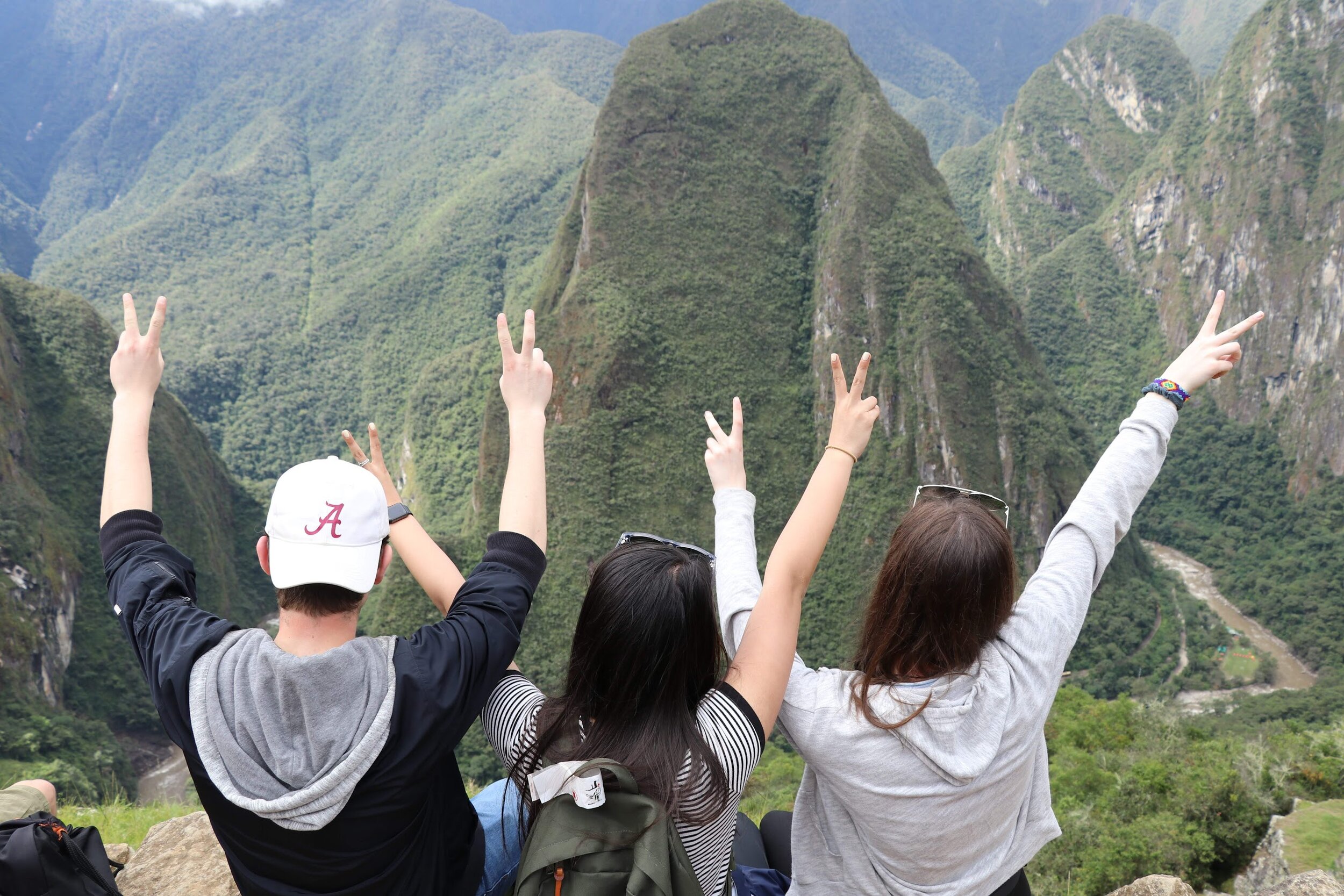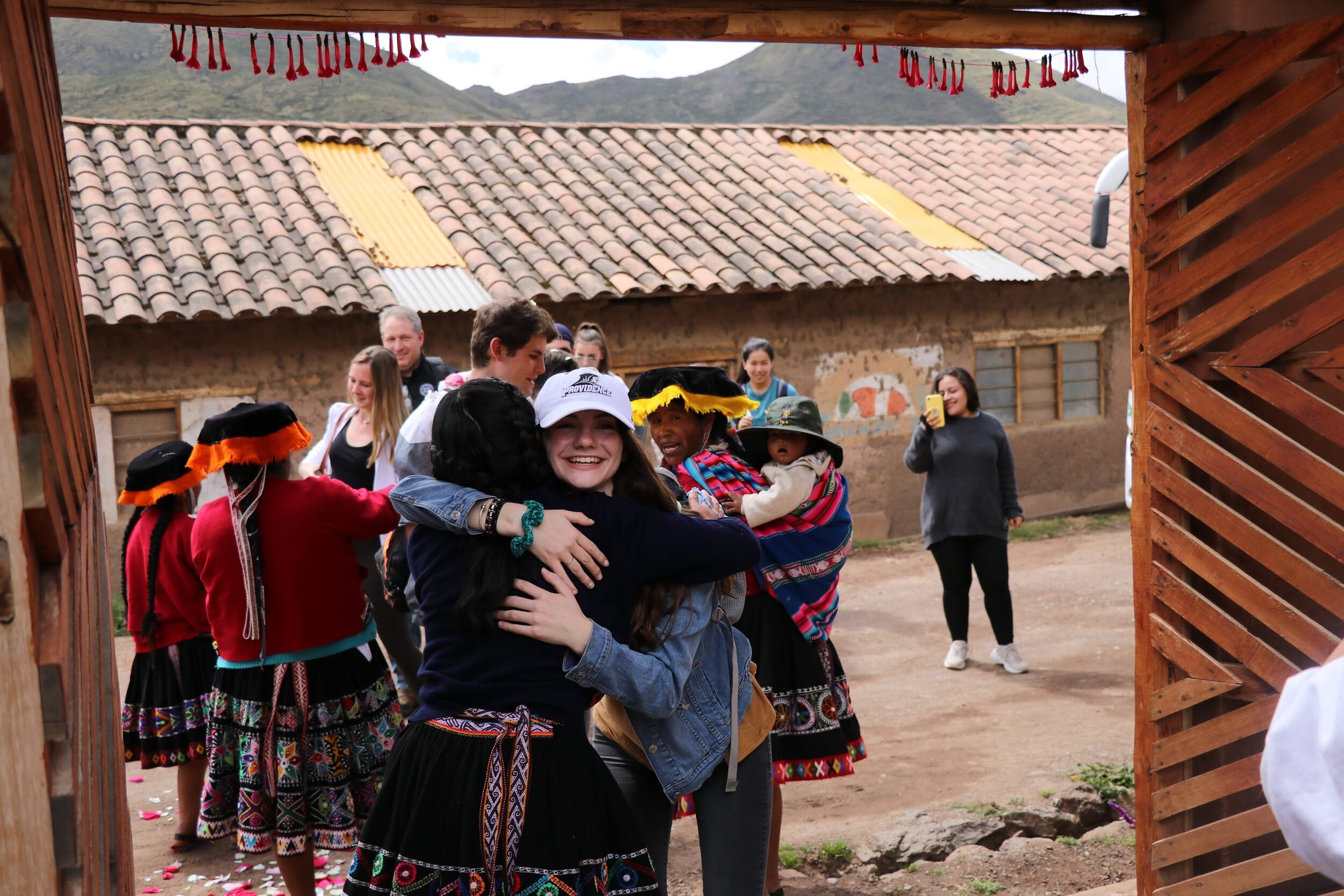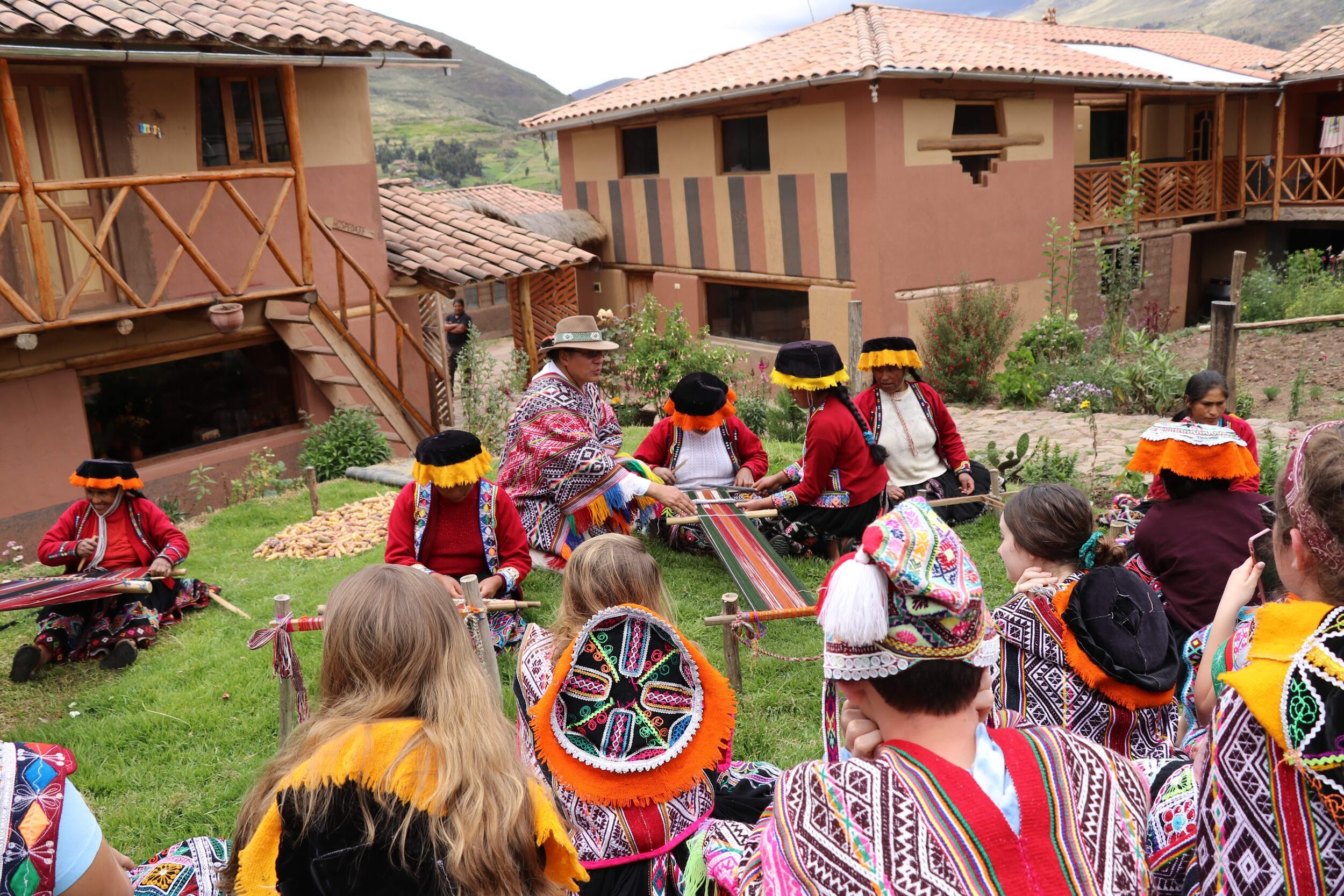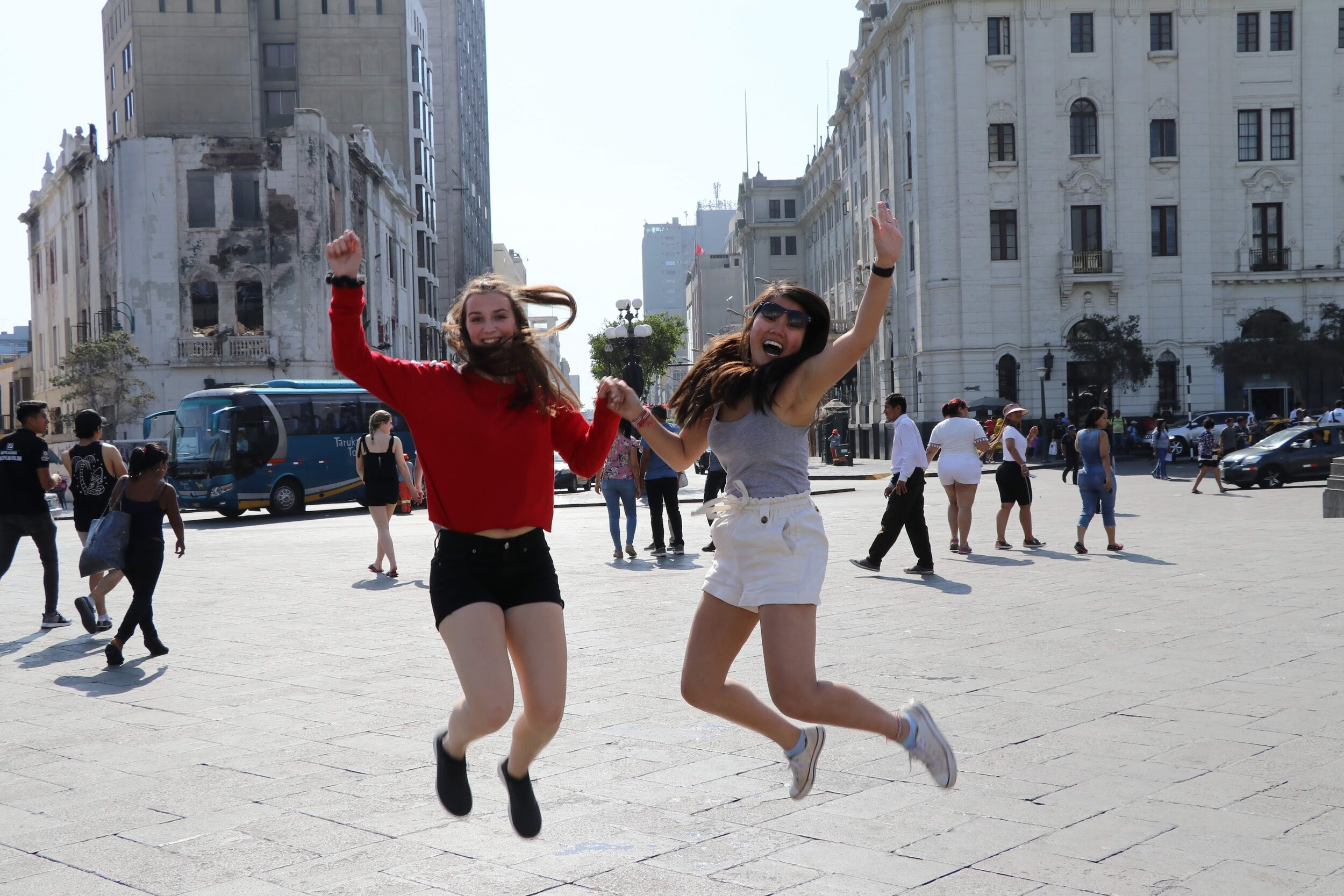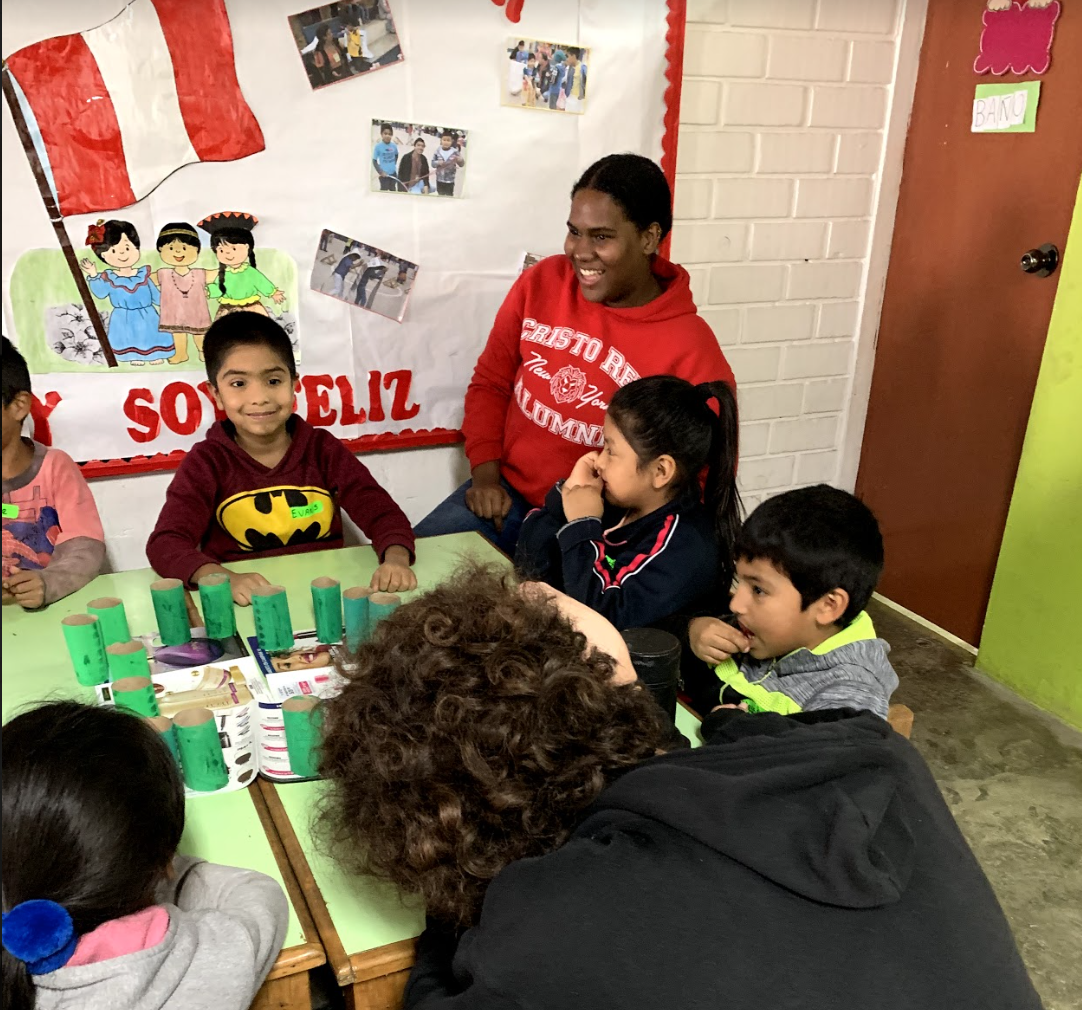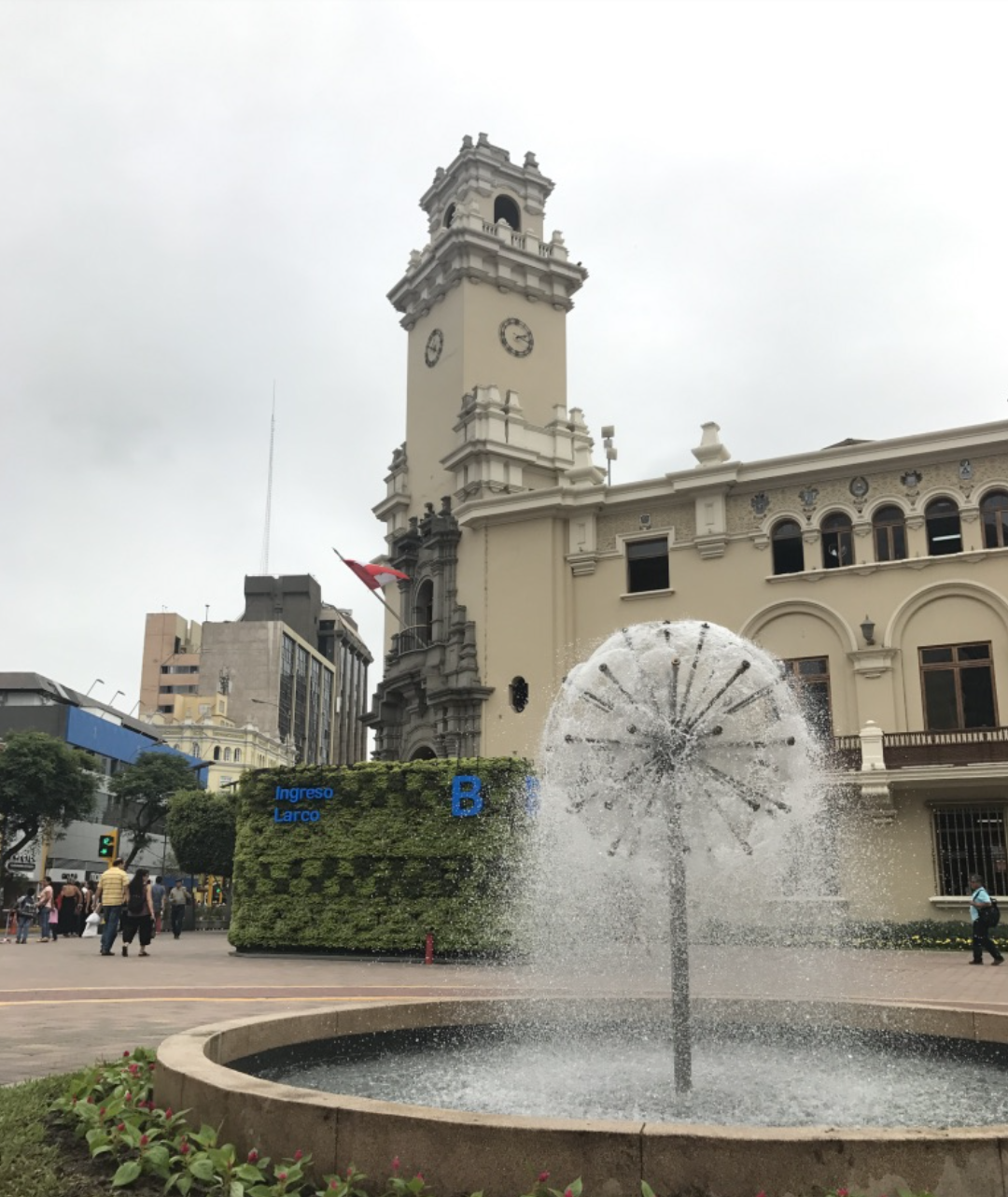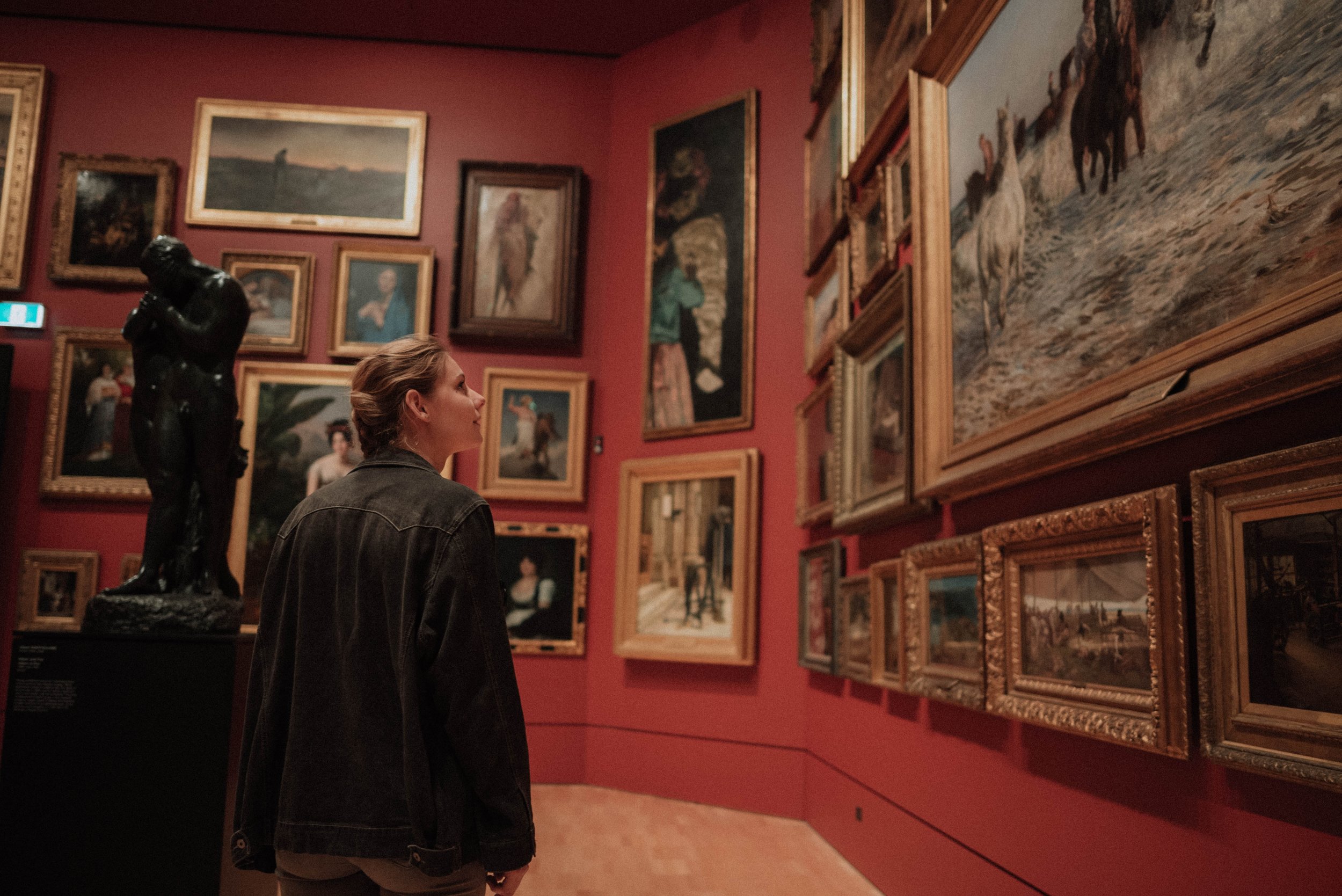Three Key Components to Keep in Mind When Planning Programs Abroad
The educational impact that travel contributes to teachers and students goes beyond the classroom. Educators, administrators and faculty from schools around the nation extend their lessons abroad and work with EdOdyssey to develop custom programs that create holistic and enriching learning experiences that best fit their needs.
The educational impact that travel contributes to teachers and students goes beyond the classroom. Educators, administrators and faculty from schools around the nation extend their lessons abroad and work with EdOdyssey to develop custom programs that create holistic and enriching learning experiences that best fit their needs.
Additionally, short-term programs help students become more self-aware, flexible, and creative, while gaining an enhanced experience in an unfamiliar country. As you start planning, you’ll want to evaluate the day-to-day structure of your custom program. In this blog, we will discuss three components to consider as you begin to design your next student program.
Keeping Students in Mind
When it comes to managing an itinerary and deciding on logistics, EdOdyssey wants to ensure that the student’s learning outcomes are included and considered throughout the entire program. From an organizer’s perspective, what resources, if any, need to be available onsite? Which activities will grant the greatest participation from the group?
Interactions within the host country and cross-cultural exchange opportunities will encourage your students to build upon their language skills. In doing so, these purposeful encounters will complement their time abroad. Ultimately, our team makes certain that you feel supported informally or formally assessing your students, and that they feel confident expressing their feelings and observations in order for them to convey the lessons that they’ve learned once they’ve returned home!
More Time in Fewer Places?
For short-term programs with limited time, many interactive activities in fewer locations allow students to really get the most out of their experiences! Our itineraries center around intentional goals, and in many cases, we’re able to meet most learning objectives in fewer cities for students and teachers. The focus of some programs requires a multi-city itinerary, and we make sure that each city meets specific objectives, since additional cities means more time in transit.
Is there a particular reason to spend time in more places in your itinerary?
This key question centers around the focus of the learning objectives because more cities can spread a program thinner and actually take away value from your program. The deceiving nature of planning itineraries doesn’t fully indicate the work that goes into traveling between cities. The process of packing, the traffic to the station or airport, the arrival, and checking into the next hotel can take an entire day with a large group. These various logistics are important to consider when deciding on areas to see. Likewise, it’s sensible to examine if the additional cities will bring value to the overall goal of the program, and how each day coincides with those macro-level goals.
Longer lengths of time in fewer places permits all participants to feel comfortable in the chosen city and expand on their experiences. As a result, your students will have the ability to connect and enjoy an area at their own pace, which allows for deeper discussions and reflections regarding the local life, culture, and history. Day trips to nearby locations are always an excellent alternative as well because students will be able to receive a great deal of information from the activities without the stress of moving to another destination. In short, EdOdyssey guarantees that students are getting more than enough knowledge and guidance in whichever city is chosen!
Flexibility Allows For Spontaneity
Furthermore, a crammed group itinerary with non-stop action may lead to tiresome travelers or reluctant students. In order to avoid overextending the group, EdOdyssey includes free-time add ons and flexible activities, such as city scavenger hunts, which give your students and faculty a bit more leverage to informally add more fun, academic value within the framework of the itinerary. As a result of reasonable spontaneity, your group will be able to explore with less stress and stay on track with the pre-planned agenda for the day!
Travel through experiential learning and free-time activities, such as visits to local markets or parks, brings about a sense of adventure and livelihood to the program. Nature-based visits or recreational day visits, tend to be environmentally conscious, historical, and overall refreshing. This type of learning tends to empower students to connect with one another in meaningful ways.
The overall shared learning experience through short-term programs allows all participants and stakeholders to feel supported during their respective programs abroad while maximizing their experience. The unique opportunity to choose custom activities for your program will become memorable experiences for your students and faculty to reminisce on. Whether you and your students look to travel to multiple locations or concentrate on one city in particular, you’ll work with an EdOdyssey educator to ensure that your learning objectives are met in order to create the best experience!
Visit our Custom Programs webpage for more information on how to get in touch with EdOdyssey today!
Cuisine and Culture: Savoring Canada's Legendary Staples
Canadian cuisine has been around for over 150 years and you’ll see how traditional dishes can vary depending on cultural influence from coast to coast! From French-Canadian influences in Quebec to more a Euro-Jewish heavy influence in Montreal, you’ll gain a sense of how culture and local staples intertwine across Canada.
Canadian cuisine has been around for over 150 years and you’ll see how traditional dishes can vary depending on cultural influence from coast to coast! From French-Canadian influences in Quebec to more a Euro-Jewish heavy influence in Montreal, you’ll gain a sense of how culture and local staples intertwine across Canada.
Let’s uncover a few of these dishes and their importance to Canadian history!
Sugar Rush
During past programs where EdOdyssey has visited Canada with students, the maple syrup experience has given students unforgettable insight into the production of one of Canada’s staple items! Students visited a local sugar shack to learn how maple syrup is first collected, and got to better understand why the maple leaf earned its place on the country’s flag. These sugar shacks are very popular attractions, especially during early spring in Quebec, when there is plenty of fresh maple to taste (Alston-O’Connor 30)!
According to Taste of Home, “Quebec produces an astounding amount of syrup each year: 7,989,000 gallons”. In order to produce one gallon of maple syrup, 40 gallons of maple sap needs to be boiled down in sugar shacks.
Interested in a sweet experience? The tire d’érable (or maple taffy) is a candy prepared “by pouring boiling maple syrup over snow...You’re then meant to roll it up with a popsicle stick and enjoy immediately” (Guan).
One of Canada’s favorite desserts, nanaimo bars, were founded in the 1950s in British Columbia. This no-bake, irresistible dessert bars consist of rich “crumb mixture, vanilla-flavoured butter icing, and melted chocolate” (Lev). Additionally, the Giant Jos Louis Cake, features a giant red velvet cake sandwich “filled with a creamy marshmallow layer with a milk chocolate coating” (Furdyk).
Butter tarts, a sweet dish in Canada, are made of pastry shells filled with butter, sugar, egg, and syrup. This is an example of traditional Canadian cuisine, some believe it can be traced back to the 1600s, while others think it resembles sugar pies in Quebec or pecan pies in the U.S. (Lev).
Beavertails, which is flat cinnamon deep-fried dough, has an interesting name for such a delicious treat. Though it might not be traditional cuisine, it’s popularity has risen over the years. Various toppings like Nutella, peanut butter, and candies are quite popular to include on top. BeaverTails were first introduced in 1978 in Ontario by a husband and wife, and got its name from the dough resembling the tail of a beaver.
Infinite Ingredients in Poutine
Poutine, the world-famous Quebecois dish made of french fries, cheese curds, and gravy is multifaceted for locals and tourists alike. This starchy and feel-good order can be consumed as a late-night meal, afternoon snack, or anywhere in between!
Over time, the traditional poutine has transformed and morphed with an even wider variety of foods and purposes. Restaurants now are even featuring poutine in creative ways, such as breakfast poutines (with roasted potatoes and eggs), curry poutine (substitute the gravy for curry), and iced poutine (replacing the traditional dish for chocolate wafers, syrup, and ice cream) (Fabien-Ouellet 40).
Poutine has even started being offered as a dish at higher-end restaurants, especially in Montreal’s fine dining scene since the early 2000s, and the dish is even celebrated in “annual poutine festivals held in places like Ottawa, Toronto, Vancouver, Chicago, New Hampshire, and Quebec” (Fabien-Ouellet 34).
Did you know that poutine is considered a social dish?
This is meant to be eaten with others, which is why it’s common to see large portion sizes supplied with a multitude of forks (Fabien-Ouellet 30)! Speaking of social settings, the White House Chef in 2016 served poutine during the first State Dinner between President Obama and the Prime Minister of Canada, Justin Trudeau (Fabien-Ouellet 28).
Each poutinerie (poutine store) offers its own distinctive flavors, which means that each poutine experience varies! This makes the tasting not only unpredictable, but also intriguing!
Regional Dishes
French Canadian traditional foods, such as poutine, maple syrup, ham and pea soup, and tourtiere (meat pie) are rich and common to find in Quebec (Cadesky). Additionally, natives of Canada on the East Coast feast on all sorts of seafood, and the additional donair, “a shaved hot dog, served with a sweet milk and garlic sauce (it also comes as a pizza)” is in the same family as a classic kebab (Cadesky). Within the seafood scene on the East Coast, lobsters are famously found on a plethora of menus, the Nova Scotian lobster rolls in particular are a Canadian favourite (Guan).
Montreal features a unique deli-style tradition, due to the large community of Jewish influence in the city, and kosher-style steakhouses have become a Canadian staple since (Cadesky). In Montreal, there is also an abundance of ethnic restaurants, including Chinese and Japanese cuisine, due to a large multicultural influence in the city (Alston-O’Connor 9).
The bannock has been a key dish for decades. This classic is a type of a quick biscuit fry bread, which was adopted by the Indigenous people of Canada (Furdyk). Modern takes include baked and fried versions, which can be found in bakeries nationwide. If you’re interested in a more hearty meal, try the French Canadian tourtière, which is a savoury meat pie popular year round, and “pork, veal, beef and game are popular choices of meat to fill the pie” (Guan).
Craving an afternoon snack?
You might try chips during your next visit! There are chip flavors that can only be found in Canada! For instance, the all-dressed chips have, “tomato and onion to salt, vinegar, sour cream and BBQ. Ketchup chips and dill pickle chips are also mega popular flavours native to the Canadian junk food scene” (Guan).
Did you know that Canada is a leading producer of insect foods? Food-grade insect farms have started to expand in Nova Scotia and Ottawa to develop unique agricultural solutions and sustainable eating (Cadesky).
We hope you enjoyed this quick look into Canada’s cuisine scene! Gastronomy is a component of our custom programs that our students and staff highly enjoy. There’s plenty of education and delicious experiences that come with trying new foods from all over the world.
If you’re interested in designing a custom program full of interactive activities, such as cooking classes and tours, contact us today for more information to start planning!
Sources
Alston-O‘Connor, Jessa Riel. Consuming Culture: Negotiating Asian Canadian Identities Through Food Culture and Art. Concordia University Montreal, Quebec, Canada, Nov. 2011.
Cadesky, Lee. “Oh, Canada - Over 150 Years of Food and Culture.” Medium, Medium, 30 June 2017.
Fabien-Ouellet, Nicolas. Poutine, Mezcal And Hard Cider: The Making Of Culinary Identities In North America. University of Vermont, 2017.
Food Network, Brent Furdyk. “30 Iconic Canadian Foods You Can Make at Home: Food Network Canada.” Foodnetwork.ca, 26 June 2019.
Guan, Christina. “17 Traditional Canadian Foods You NEED to Try.” Hostelworld Blog, 30 July 2019.
Hansen, Kristine. “10 Surprising Facts About Maple Syrup.” Taste of Home.
Lev, Elianna. “10 Must-Try Canadian Dishes (and the Best Places to Find Them).” Reader's Digest.
February Festivities in Italy: What to Expect
As the new year begins and winter comes to an end, there is much to look forward to! Specifically, February is a celebratory time for citizens of Italy. While Christmas celebrations come to a close, major celebrations quickly follow and are held throughout this special country.
As the new year begins and winter comes to an end, there is much to look forward to! Specifically, February is a celebratory time for citizens of Italy. While Christmas celebrations come to a close, major celebrations quickly follow and are held throughout this special country.
Why is February a great time to visit? Besides the lesser amount of crowds, visitors will also enjoy the cooler temperature, compared to Italy’s summer heat. Due to the nicer weather, Rome’s historical neighborhoods, like Trastevere, the Jewish Ghetto, and Vatican City are very enjoyable to walk through!
Is Italy on your bucket list?
Mark your calendars as you read about four important Italian festivities happening in February:
Saint Biagio Day
Although it isn’t considered a major holiday in Italy, it’s tradition to “eat leftover panettone with a glass of wine” on Saint Biagio Day, who is the saint of the throat (Bakerjian). By partaking in this tradition, participants will therefore be able to bless their own throats and health. In religious practices, it is common to see priests bless each person with a pair of unlit candles around the throat, which is said to protect them during the new year.
Feast Day of Saint Agatha
A two-day procession is held February 3-5, 2020 to honor the patron saint of Catania, Sicily - Saint Agatha. It’s estimated that almost a million people visit and honor this Sicilian martyr, who died at the age of 15 (Fabio). Catania truly does take this time to admire and reflect its patron saint!
Carnevale
Considered one of the most important festivals in Rome, and other areas in Italy, is the eight-day-long festival called Carnevale, which would be compared to the United States’ version of Mardi Gras (Renzulli). This celebration leads up to Lent, a religious observation of fasting and prayer. Various events are held throughout the cities, including Rome and its major piazzas (public squares). Rome’s emphasis on Carnevale is much more artistic, theatrical, and colorful now, compared to the competitive nature it held decades ago. Specifically, the Piazza del Popolo in Rome, features exciting horse parades and shows during Carnevale!
Cities celebrate by dressing up in costumes and masks, and feature their neighborhoods in lights and confetti which creates a unique atmosphere. Besides costumes and decorations, you can expect to see many parades, balls, parties, and entertainment, as well as mischief and pranks among children. It’s no surprise that it is one of the “most colorful celebrations in the world” (Bezzone)!
Costumes and masks became a fixture of the celebratory event during the early Renaissance, and the popular masquerade balls were introduced during the 15th century (Bezzone). There are plenty of vendors in public squares in the cities who will paint faces of visitors with color and glitter at modest prices, so there’s no need to worry if you’ve forgotten your mask!
The term, “carnevale,” comes from the Latin expression, “carnem levare”, meaning “taking away meat” (Bezzone). This expression is connected to Ash Wednesday, which is the day when Lent begins, and people stop eating meat. Origins of Carnevale date back to the Roman Saturnalia, which celebrated the honor of the new year. From a religious background, Carnevale represents one last moment of indulgence before Lent and celebrates a new beginning and new birth, such as springtime and Easter (Bezzone). Carnevale became popular because it allowed the upper and lower class to do and say whatever they felt to one another since their identities were hidden, and for the lower class to mingle without feeling like they were being ridiculed.
Carnevale comes 40 days before Easter, so the date changes each year, although the most elaborate cities, such as Venice and Viareggio, host Carnevale celebrations that last for weeks (Bakerjian)! No matter where you might visit in Italy during the month of February, Carnevale is celebrated all over in various ways!
Valentine’s Day
Similar to the United States, February 14th is no ordinary day in Italy. Valentine’s is the Feast Day of Saint Valentine, “a Roman priest who lived in Rome in the 3rd century” and supposedly “married Christian couples in secret” (Renzulli). Though there is uncertainty of who Saint Valentine actually is, the day is still celebrated because of the legends people have heard for years.
Valentines was initially the Spring Festival in Italy, where people would gather in gardens or parks and enjoy music and poetry, however, this tradition hasn’t been celebrated for centuries (St Valentine's Day). Now, it can also be considered an imported holiday, like the U.S., or a reason to show one’s love through gifts and quality time. In Italy today, people continue to celebrate by giving and receiving flowers, sweets, and cards. Another popular gift to receive is “Baci Perugina - a small, chocolate-covered hazelnuts containing a small slip of paper with a romantic poetic quote in four languages” (St Valentine's Day).
Italy is such a vibrant and passionate country, and we hope you’ve enjoyed our insight into its festivities this winter. Events, such as the Carnevale, are definitely not ones that you want to miss! Not to mention, many of the post-holiday sales continue all the way to Holy Week so you might be able to get some great deals on souvenirs!
Intrigued with Italy and want to explore with students and fellow teachers? Visit our webpage to learn more about designing a custom program that’s perfect for your school and students! We’ll get in touch with you faster than you can say “Ciao”!
Sources
Bakerjian, Martha. “February Festivals and Holiday Events in Italy.” TripSavvy. June 26, 2019.
Bezzone, Francesca. “The History of Carnevale and some of Italy’s best Parades.” Life in Italy. March 2, 2019.
Fabio, Michelle. “Feast of Saint Agatha in Catania, Sicily.” Italy Magazine. February 2, 2009.
Renzulli, Melanie. “Celebrating Carnevale, Lent, and Valentine's Day in Rome.” TripSavvy. June 26, 2019.
St Valentine's Day. “Valentine’s Day in Italy.” St. Valentines Day. Society for the Confluence of Festivals in India.
Celebrating The Holidays Around the World
Christmas time is celebrated worldwide. The holiday season is a special time for families and friends to give thanks, share gifts, and join in the holiday spirit, all over the world. Read on for fun facts about holiday traditions celebrated in all five of EdOdyssey’s locations!
Christmas time is celebrated worldwide. The holiday season is a special time for families and friends to give thanks, share gifts, and join in the holiday spirit, all over the world. Read on for fun facts about holiday traditions celebrated in all five of EdOdyssey’s locations!
Peru
Peru celebrates Christmas Eve, or Noche Buena Similar to other Latin American countries. Gifts are placed near the Niño Jesus (Baby Jesus) in the manger scene in homes. The nativity scene, is common imagery in Latin American countries.
Another impressive tradition for Peruvians is fireworks on Christmas Eve. In December, markets and streets sell many fireworks. The idea is to set off fireworks at midnight to celebrate, and families enjoy them as it lights up the night sky over the city (Salazar).
A Peruvian Christmas would not be the same without hot chocolate and panettone. Hot chocolate is primarily drank during the holiday season in Peru and panettone, a sweet cake bread, has become a staple in many households. These items seem normal in the northern hemisphere, but remember, it’s actually summer time in Peru during Christmas! Regardless of the hot weather, they’re happy to enjoy their hot cocoa and Santa Claus still wears his full suit with boats!
Spain
Before schools go on Christmas vacation, many teachers and students have an “amigo invisible” or invisible friend similar to Secret Santa in the USA. Typically, groups of teachers and students do this secret gift exchange with small, surprise presents and everyone tries to guess who their invisible friend is!
Christmas always come a few days early for Spain, particularly on December 22, where the winning numbers of the Christmas Lottery are announced. This lottery is known as “el gordo”, which translates to the “fat (or big) one” since people from all around the country throw in a few euros for this holiday tradition. Many people buy tickets to see if they’ll win the lucky number.
On Christmas Eve, or Noche Buena, is generally spent with loved ones and many houses prepare Seven Fishes for their meals. Most families eat their main Christmas feasts before heading to midnight mass, called the Misa del Gallo. In many homes, Santa Claus, or Papa Noel, brings gifts to children who have been good.
On December 28, Spain celebrates Día de los Santos Inocentes (Holy Innocents’ Day). This is another tradition that has evolved over time that’s become a Spanish April Fool’s Day where people play pranks on each other.
On New Year’s Eve, Nochevieja, crowds gather in public or at home to eat the 12 uvas de la suerte (12 lucky grapes) during the final moments of the old year, so that luck will be on their side during the year to come (“Christmas in Spain”). In Madrid, people from near and far pack La Puerta del Sol in the city center hours before midnight. At midnight, the bell in the La Puerta del Sol chimes 12 times. For each chime, people need to throw a grape in their mouth, and it’s bad luck to not finish them! Many Spaniards watch the show of Puerta del Sol and follow along on TV to avoid the crowds!
Italy
In Italy, cities have beautiful decorative lighting on the streets as people wish others “Buon Natale” (“Good Nativity”). Traditionally, the central Christmas decoration is the Nativity scene, known as a “presepe”. These can be found in churches, public areas, and often displayed in homes. Novena, a celebration eight days before Christmas, is when children will recite poems and songs and write letters to their parents (Joshua Expeditions).
Italy’s whole holiday season is about spending time with family! There's always tons of Italian Christmas cake, known as panettone, and lots and lots of hearty comfort food, Italian style. On Christmas Eve, it's common that a light meal is shared before families go to the Midnight Mass together. When they return home, it’s customary to have a slice of panettone and hot chocolate!
Following Christmas Day, Italians continue festivities through January 6, known as the Epiphany, where they spend time with family and children receive gifts, delivered by Befana, an older woman who is said to arrive on a broomstick and slide down chimneys to fill childrens’ stockings (Joshua Expeditions).
China
Compared to most countries who celebrate Christmas, China celebrates the day as a time to go out and hang out with friends, see a movie, or even go shopping. It is common for students of all ages to decorate and exchange cards (CLI Team). It’s also expected to hear popular Christmas songs, such as Jingle Bells, being played in malls and public spaces, where buildings are decorated with twinkling lights and holiday decor.
One interesting tradition is exchanging a Christmas apple, also known as the “Peace Apple,” which indicates having a peaceful night and best wishes for the new year!
Quebec City, Canada
The Christmas tree, decorations, and mistletoe became modern holiday symbols in Quebec during the late 19th century. Besides midnight mass, contemporary Christmas celebrations include a visit with Santa Claus, wreaths, and greeting cards. Symbolic traditions, such as tinsel and lights, are shared by all North American families, but there is still a desire to keep Christmas traditional with native roots, by continuing to share old folk tales and legends (Par Warren).
As well as our own - USA
The U.S. has many different traditions and ways that people celebrate the holidays, because of its multicultural nature. Many customs are similar to ones in Europe, Central America and South America.
However, there is a wide variety of religious celebrations beyond Christmas as people have immigrated from all around the world. Many Americans celebrate their heritage, religious roots, and cultural values to observe holidays, such as Kwanzaa and Hanukkah.
Although the weather varies a lot on location during the holiday season across the US, some common aspects of the holiday season involve spending time with loved ones, exchanging presents, and taking part in festive parties. Even in the most diverse neighborhoods, many neighborhoods in major cities come together to expo their holiday spirit with lights and decorations where neighbors show off their creativeness and holiday spirit!
All of us here at EdOdyssey wish you a happy holiday wherever you might be around the world! If you haven’t already, follow us on Facebook, Twitter, and Instagram so you can stay connected with us as the new year approaches!
Director of Program Development, Joe Meringolo, and Program Coordinator for Italy, Rachel Zitin, also contributed to this blog.
Sources
“Buon Natale a Tutti: Christmas in Italy.” Joshua Expeditions, 20 Dec. 2012, www.joshuaexpeditions.org/buon-natale-a-tutti-christmas-in-italy/.
“CHRISTMAS IN SPAIN.” Spanish Christmas Traditions - Don Quijote, www.donquijote.org/spanish-culture/holidays/christmas/.
CLI TEAM. “Things to Know About Christmas in China.” CLI, 7 Oct. 2019, www.studycli.org/things-to-know-about-christmas-in-china/
Gallagher, Tom. “Latino Christmas: Nativities of Latin America.” National Catholic Reporter, 24 Dec. 2009, www.ncronline.org/news/spirituality/latino-christmas-nativities-latin-america.
Par Warren, Jean-Philippe. “Articles: Encyclopédie Du Patrimoine Culturel De L'Amérique Française – Histoire, Culture, Religion, Héritage.” Articles | Encyclopédie Du Patrimoine Culturel De L'Amérique Française, 15 Dec. 2008, www.ameriquefrancaise.org/en/article-478/Christmas_Celebrations.html
Salazar, Daniel. “Fireworks on Christmas - Global Volunteers Service Programs.” Global Volunteers, 19 May 2018, www.globalvolunteers.org/fireworks-on-christmas/
6 Major Program 2019 Highlights Across Our 5 Locations
As we close up shop on 2019, we’re excited to share with you some notable highlights, including amazing activities and famous sites, that groups of students and faculty were able to enjoy all around the globe! Here’s a closer look into our custom programs during 2019…
As we close up shop on 2019, we’re excited to share with you some notable highlights, including amazing activities and famous sites, that groups of students and faculty were able to enjoy all around the globe!
Here’s a closer look into our custom programs during 2019:
Madrid, Cordoba, and Seville, Spain
A group of students visited Spain in March, 2019 for a Spanish Immersion program, full of rich cultural heritage. Students participated in a many interactive activities during the stay, such as a scavenger hunt in Madrid, where they explored an area of the city center and searched for objects within the area. The group absorbed Spanish art, culture, and language while touring the Museo Thyssen-Bornemisza, and incorporated the use of the Spanish language with Spanish artwork. Students also had the opportunity to visit the Santiago Bernabéu Stadium, home to the soccer team, Real Madrid!
Following Madrid, students were immersed into a variety of classes and instruction in Cordoba, Spain, as they attended school with their host brothers and sisters. Students had time to become acquainted with their host families and explore the city together. The group also visited Fundación de Banco de Alimentos, a non-profit organization that provides support to lower income families and serves the community.
Students also learned about Spain’s ancient history during a visit to La Mezquita, the historic area of Cordoba. One of the best examples was the Mezquita-Catedral, which was originally constructed as a Mosque and now is a Catholic Cathedral. As the program came to a close, students put on their dancing shoes as they worked with a local musician to learn about the folkloric music of flamenco, its roots, and history in Southern Spain.
Rome, Italy
March was a busy month for travel as an additional group of students and faculty visited Italy. One of the faculty leaders for EdOdyssey’s Rome Program enjoyed a program inspired from the work Walking with a Palladio: A Passport to Rome that helped give students valuable insight into the history of Rome. After settling in, the group explored important basilicas, including Santa Maria Maggiore, San Giovanni in Laterano, and the Basilica of San Clemente. Following a long first day of travel, students enjoyed a group dinner with roman style pizza.
Rome’s historic center is incredibly generous with its architecture and rich history, including some of the biggest attractions, such as the Pantheon, a nearly 2,000 year old former Roman temple that is now a church, and the Colosseum, Rome’s greatest gladiatorial arena inaugurated in 80 A.D. Next, students toured surrounding ancient ruins, where they traced origins back to Palantine Hill and spent time in the Roman Forum, known as the downtown district of temples.
The group also ventured over to one of the most famous fountains in the world, the Trevi Fountain. Tradition requires that visitors toss a coin into the fountain to ensure a return to the Eternal City! St. Peter’s Square and St. Peter’s Basilica could not be missed! Students spent a full day in the Vatican City and visited the Sistine Chapel and the Vatican Museum, home to some of the world’s greatest art collections.
Students were also able to spend time with local students, volunteer, and gain insight into a typical italian school atmosphere. Another interactive, hands-on activity included a special group dinner prepared by the group with a local chef, and delicious samplings of famous dishes!
“The best part of the trip was going to the school because we met so many new people and got to experience another culture with kids that were our ages. I would definitely recommend this trip to anyone and I would personally go back again.” - Cole, Student
Shanghai, Guilin, Yangshuo and Daxu, China
EdOdyssey also travelled to China in 2019 with students studying Mandarin to understand the importance of Chinese culture and their way of life. Beginning in Shanghai, students spent time with their sister school, Shanghai High School. Afterward, the group traveled to Guilin and engaged in intensive small group Chinese classes to strengthen language skills used during the remainder of the program.
Additional interactive activities included Taiji Quan with a Taiji master. Taiji Quan, often spelled Tai Chi in the West, is a Chinese martial art practiced for defense training and health benefits. Students also met with local students to hike Chuan Shan, Guilin’s karst mountain scenery, and participated in a Chinese calligraphy lesson led by a local artist. To dive deeper into China’s religious roots, the group explored a Buddhist monastery, chatted with monks, and meandered through the underground prayer caves.
“The mountainous view was gorgeous and unreal. We learned a lot about the religious culture as it [Guilin] was a more rural part of China compared to Shanghai but I definitely enjoyed both totally different experiences a lot.” - Ikwo, Student
Students enjoyed learning about tea culture through a traditional Chinese tea ceremony and savored a hot pot dinner followed by karaoke with Chinese friends. The group also cruised down the famous Li River to Yangshuo and explored the famous shopping and cultural district.
Lima and Cusco, Peru
During April of 2019, a group of students traveled to Peru for a Solidarity & Service Trip. They improved on their Spanish language skills through authentic immersion and service with local communities. Corazón de Jesús, a K-12 school located in a low-income area of Lima, was the students’ first immersive experience where they played with children and had lunch in the school cafeteria with local students.
Upon arrival to Cusco, the group got acquainted with a city tour, then visited a local ceramic class and made their own Torito de Pucará, which is well known in Cusco due to its representation of the Peruvian South-Andean identity.
The group rode PeruRail Train from Ollantaytambo to Aguas Calientes, the base town of Machu Picchu, and explored the ancient ruins with a local guide. After a short bus ride to Amaru, the group lived like the local community, prepared their own food with the help of Amaru friends, and visited other local residents, such as the alpaca and vicuña.
Their return to the States included one last stop in Lima, and students spent the afternoon exploring the center of Lima, along with it’s beautiful architecture. However, their program wasn’t complete without taking part in a Peruvian cooking class!
The final service project in Lima was in Pamplona Alta, a special community EdOdyssey has maintained a close bond with. There, students worked together with leaders to build stairs up in the hills where access to water and electricity is limited.
“This trip was one that I will never forget, and one that I would never change. This trip changed the way I view the world. It also allowed me to connect further with who I truly am as a person. Throughout this trip I gained a deeper understanding of how other people around the world live everyday. The amazing people in Peru who accepted us from the moment we arrived to our departure showed me what it meant to embrace your culture and where you come from.” - Grace, Student
Quebec and Montreal, Canada
As the fall semester began for students, French language students visited Canada in October, 2019 to focus on the past and present of Quebec. At the beginning, the students were welcomed by their host families and spent time getting to know them. Students also attended French language classes at a local school to utilize the target language as much as possible and had lunch in the cafeteria with the locals.
Students participated in a scavenger hunt in Quebec City and visited a local Sugar Shack to learn how maple syrup is collected and sampled the delicious sweet. In addition to learning about Canada’s sweet traditions, the group also had the chance to taste a traditional speciality known as Poutine!
After a short journey to Montreal, students had time to discover the historic neighborhood and see sites such as the Notre-Dame Basilica with a local certified bilingual guide. Students also prepared traditional Quebec cuisine with a local chef for dinner! Their program concluded with an entertaining workshop about local graffiti art where students created their own masterpieces!
Pontificia Universidad Católica del Perú, Lima, Peru
Groups of our study abroad students arrived in Lima, Peru for spring, summer, and fall semesters, where they met up with the EdOdyssey team in preparation for their semester or academic year abroad at PUCP. During their first month, our students began to familiarize themselves with the area, visited other districts in Lima, volunteered with local organizations to serve their community, got to know their homestay families, and attended an 80-hour language booster course to become comfortable with Spanish as their primary language of communication.
Additionally, our groups of students went on in-depth journeys to explore Peru’s incredible diversity through excursions to Iquitos, Sacred Valley, Machu Picchu, Cusco, and Huacachina, and Ica. All excursions displayed different landscapes and components of Peru, including the cuisine and history, in hopes of students continuing to seek out adventures during their travels.
As this fall semester comes to a close, we hope our current study abroad students can enjoy their last few weeks in Lima and reflect on all of the enriching experiences Peru has brought into their lives.
“Soon Peru became like a home to me, thanks to the program coordinator and the other staff who constantly went above and beyond what was expected of them to ensure that we all were well accommodated. The additional trips that were offered throughout the semester and the volunteer opportunities were definitely a huge part of my experience and I am grateful to have been a part of such a beautiful thing.” - Yarlenis, EdOdyssey Study Abroad 2019 Alum
Some of these EdOdyssey 2019 highlights have made for a fun-filled year! We look forward to all of our programs happening in 2020!
Interested in designing your own custom program with EdOdyssey? Visit our webpage for more information on how you can get involved with immersive international experiences with your students during 2020. Below is a video highlighting EdOdyssey and why we believe travel changes people!
Check out our new welcome video!
Debunking Common Hesitations About Traveling
As humans, we can plan ideas in our heads and create justifications without exploring the emotion before these reasons. For example, sometimes we create excuses to avoid facing difficult truths without exploring our options.
As humans, we can plan ideas in our heads and create justifications without exploring the emotion before these reasons. For example, sometimes we create excuses to avoid facing difficult truths without exploring our options.
How many times have you thought “I don’t think that I have time to travel”? You might be nervous to get out of your comfort zone, or maybe you’re waiting for someone else to come along to travel with you.
In any case, we have to confront challenges around study abroad: what seems to be holding you back from traveling? Money, your career, school, relationships?
There’s a whole world out there waiting to be explored! We recommend taking on the experiences instead of passing them up! There has bever been a better time to fulfill your dream of going overseas like the present. It’s understandable to have hesitations, but we want you to challenge your own reasons and justifications regarding why you think that you can’t study abroad to help you realizing that you can do it!
Today, we’re debunking some of the most common challenges surrounding why students choose not to study abroad:
“I can’t afford to travel.”
This has got to be the #1 reason why people skip out on international experiences. I’ll be honest, I’ve said this more times than I can count! Instead, I want to bring awareness to affordable travel. There are a few options that can help relieve this financial headache.
Traveling is far easier than you think for cheap! Hostels, public transportation, cheaper airlines, minimal luggage, and working abroad are all quick ideas that can help alleviate huge expenses when you’re overseas. Seek out free things to do in the destination (museums, free walking tours, etc) while creating your budget. Some study abroad programs include most, or all meals, depending on the program!
But what about before the plane even takes off?
If you’re studying abroad or doing a service trip overseas, consider fundraising or setting up an online funding page friends and family can contribute to! EdOdyssey’s study abroad program offers scholarships students can apply to, and guaranteed financial aid for households with an annual income of $55,000 or less.
“I don’t have time to travel.”
It’s difficult to get time off from work, family, school, and overall responsibilities. But let’s be frank. If not now, then when? If you’re in your younger years, take this flexible time in your life and maximize your independence! Travel improves wellness, and you deserve time off of work and school! If you’re waiting for the right time to travel, it might be a long wait, because there will always be something going on in life.
Throw your FOMO aside! Think about all the awesome experiences you'll have in exchange for traveling overseas and book that plane ticket. If you're worried about plans changing, buy a refundable ticket that you can cancel or change if necessary. Make that dream a reality, because responsibilities will accumulate as the years go by!
“I don’t have anyone to travel with.”
There are plenty of options if you want to travel with other people! For instance, if you enjoy yoga, you can find other people who enjoy practicing in your new city. You will also meet people while traveling, so you won’t be ‘alone’ during your entire time abroad.
EdOdyssey Marketing Intern Amanda Lowrey (top right) solo traveled through New Zealand and made friends for life!
Yes, solo travel can be awkward at times, but you’ll make unexpected friends! When you study abroad, you’ll find plenty of people looking to make new friends, and it allows you to grow as a person and become more independent! Often times, you’ll meet other solo travelers or study abroad students you probably wouldn’t have taken the time to chat with had you been with friends! Sometimes the best surprises come on your own explorations.
“I don’t speak the local language.”
Technology has made travel super accessible with language and translator apps! Google Translate and TripLingo have translator features that make international exploration much less overwhelming! If you plan on a longer duration time abroad or have enough months ahead before your departure, try DuoLingo, an app that can help you learn the basics of your language of choice.
EdOdyssey students in Peru practice Spanish and participate in immersive cultural activities!
If you’re really motivated, you can stay with homestay families, work abroad, and learn the language from locals themselves! EdOdyssey’s study abroad students in Peru spend over 80 hours in a language booster class before their semester in order to get comfortable with their Spanish. There are plenty of options when bridging the barrier of language!
“I’m scared to travel.”
Travel enables you to overcome your fears, even when change is unsettling. The more you explore, the easier it becomes. It’s normal for certain things to not go as planned, and travel is a great vehicle for adventure, inspiration, and growth! Fears are challenging to overcome. Fear of the unknown, flying, dealing with foreign languages, not being able to relate to locals, getting lost, the list goes on.
But when will you conquer your fears?
You’ll end up being surrounded by fascinating people overseas and meet like-minded travelers, as well as meeting locals who can teach you about the country you’re visiting. You’ll overcome a lot of your fears just by interacting with people from cultures separate from your own.
If you really want to travel, do it! Don’t let these challenges hold you back, we promise you won’t regret your adventures abroad! Decisions made to go abroad can profoundly affect your experiences later on! Read Three Areas in Life Where Travel Benefits Your Future for more insight into how traveling can enhance your life!


















